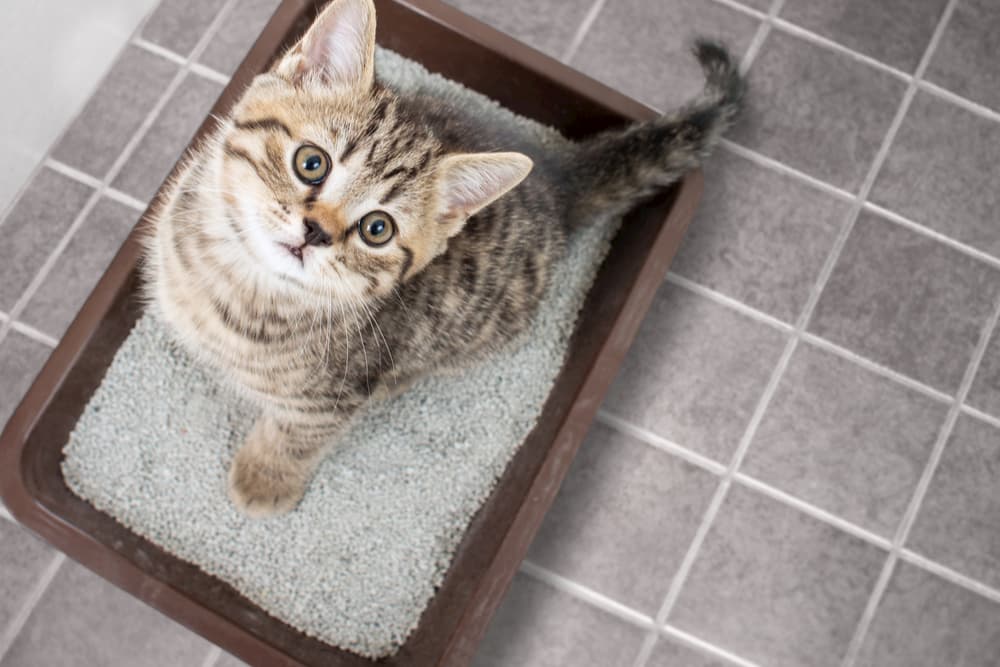Your Effects of Flushing Animal Waste Down the Toilet
Your Effects of Flushing Animal Waste Down the Toilet
Blog Article
We have stumbled on this post pertaining to Don't Flush Your Pets Poo Down The Loo, Vet Warns below on the internet and believe it made good sense to share it with you in this article.

When it involves getting rid of waste, particularly animal waste, many individuals usually resort to the convenient alternative of flushing it down the toilet. However, this seemingly very easy remedy can have major repercussions for the environment and public health. In this article, we'll explore why flushing pet waste down the commode is a poor idea and provide different approaches for appropriate disposal.
Introduction
Appropriate garbage disposal is essential for preserving environmental sustainability and public health. While it might seem safe to purge animal waste down the toilet, it can cause numerous issues, both for the setting and human well-being.
Threats of flushing animal waste
Ecological effect
Purging animal waste introduces hazardous germs and pathogens right into rivers, which can negatively affect water ecosystems. These microorganisms can pollute water sources and harm marine life, interfering with fragile ecosystems.
Public health issues
Animal waste has harmful bacteria such as E. coli and Salmonella, which can position major health and wellness risks to human beings. Purging pet waste down the bathroom can infect water products, bring about the spread of diseases and infections.
Alternatives to flushing
Rather than purging animal waste down the toilet, there are a number of alternative disposal techniques that are more eco-friendly and sanitary.
Composting
Composting animal waste is a green means to get rid of it. By composting, raw material is broken down right into nutrient-rich soil, which can be used to feed yards and plants.
Garbage dump disposal
Throwing away animal waste in a landfill is an additional choice. While not as environmentally friendly as composting, it is a much safer choice to flushing, as it stops the contamination of water sources.
Pet dog waste disposal systems
There are customized animal garbage disposal systems available that securely and hygienically dispose of animal waste. These systems commonly make use of enzymes to break down waste and eliminate odors.
Steps to appropriate pet garbage disposal
To ensure proper disposal of animal waste, comply with these steps:
Scooping and bagging waste
On a regular basis scoop and bag pet waste utilizing eco-friendly bags. This prevents waste from contaminating the environment.
Making use of marked waste containers
Dispose of bagged animal waste in designated waste containers, such as compost containers or landfill containers. click here Prevent flushing it down the commode whatsoever prices.
Cleaning can and animal areas consistently
Frequently tidy litter boxes and pet dog locations to stop the build-up of waste and bacteria. Usage pet-safe cleansing items to keep hygiene.
Advantages of proper disposal approaches
Taking on appropriate disposal approaches for pet waste supplies numerous advantages:
Reduced environmental pollution
Proper disposal techniques minimize the danger of environmental pollution, shielding rivers and communities from contamination
Reduced danger of water contamination.
By avoiding flushing pet waste down the toilet, the danger of water contamination is dramatically lowered, securing public health.
Improved hygiene and health
Proper disposal methods advertise far better hygiene and health, developing a safer environment for both human beings and pets.
Conclusion
Finally, purging pet waste down the commode is hazardous to the atmosphere and public health. By adopting different disposal approaches and complying with proper waste monitoring methods, we can minimize the negative influence of pet waste and add to a cleaner, healthier planet.
What To Do With Dog Poo – The Do's And Don'ts Of Disposing Of Faeces
Dog poo bins
Some councils provide dedicated dog waste bins in popular dog-walking areas that can take dog poo that has been bagged but you can legally dispose of dog waste in any public litter bin, as long as it is securely bagged. This also applies to your wheelie bin at home.
Do not flush
Water companies do not recommend flushing dog faeces down the toilet because certain parasites can survive the water processing treatment and are potentially harmful to humans. You should also never consider flushing dog poo that has been bagged down the toilet as the bags will not break down and instead create severe blockages in the sewage system.
In the woods
The Forestry Commission promotes a ‘stick and flick’ method for dealing with waste in the woods. This means finding a stick and using it to flick any poo from off the path so that it is out of the way of other walkers. You could also bury it as long as it is not in an area where there might be livestock.
Livestock
Parasites found in dog poo can be transmitted to livestock if they inadvertently eat infected faeces that has been left on grazing land. This could result in the death of sheep or abortion in cattle so you should always make sure you pick up your dog’s waste in fields where livestock could be present.

Frequently tidy litter boxes and pet dog locations to stop the build-up of waste and bacteria. Usage pet-safe cleansing items to keep hygiene.
Advantages of proper disposal approaches
Taking on appropriate disposal approaches for pet waste supplies numerous advantages:
Reduced environmental pollution
Proper disposal techniques minimize the danger of environmental pollution, shielding rivers and communities from contamination
Reduced danger of water contamination.
By avoiding flushing pet waste down the toilet, the danger of water contamination is dramatically lowered, securing public health.
Improved hygiene and health
Proper disposal methods advertise far better hygiene and health, developing a safer environment for both human beings and pets.
Conclusion
Finally, purging pet waste down the commode is hazardous to the atmosphere and public health. By adopting different disposal approaches and complying with proper waste monitoring methods, we can minimize the negative influence of pet waste and add to a cleaner, healthier planet.
What To Do With Dog Poo – The Do's And Don'ts Of Disposing Of Faeces
Dog poo bins
Some councils provide dedicated dog waste bins in popular dog-walking areas that can take dog poo that has been bagged but you can legally dispose of dog waste in any public litter bin, as long as it is securely bagged. This also applies to your wheelie bin at home.
Do not flush
Water companies do not recommend flushing dog faeces down the toilet because certain parasites can survive the water processing treatment and are potentially harmful to humans. You should also never consider flushing dog poo that has been bagged down the toilet as the bags will not break down and instead create severe blockages in the sewage system.
In the woods
The Forestry Commission promotes a ‘stick and flick’ method for dealing with waste in the woods. This means finding a stick and using it to flick any poo from off the path so that it is out of the way of other walkers. You could also bury it as long as it is not in an area where there might be livestock.
Livestock
Parasites found in dog poo can be transmitted to livestock if they inadvertently eat infected faeces that has been left on grazing land. This could result in the death of sheep or abortion in cattle so you should always make sure you pick up your dog’s waste in fields where livestock could be present.

I was shown that report about Why you should never flush dog poop down the toilet through an acquaintance on a different site. I beg you pause to share this article if you appreciated it. Thanks a bunch for your time. Come back soon.
Book A Service Call Report this page